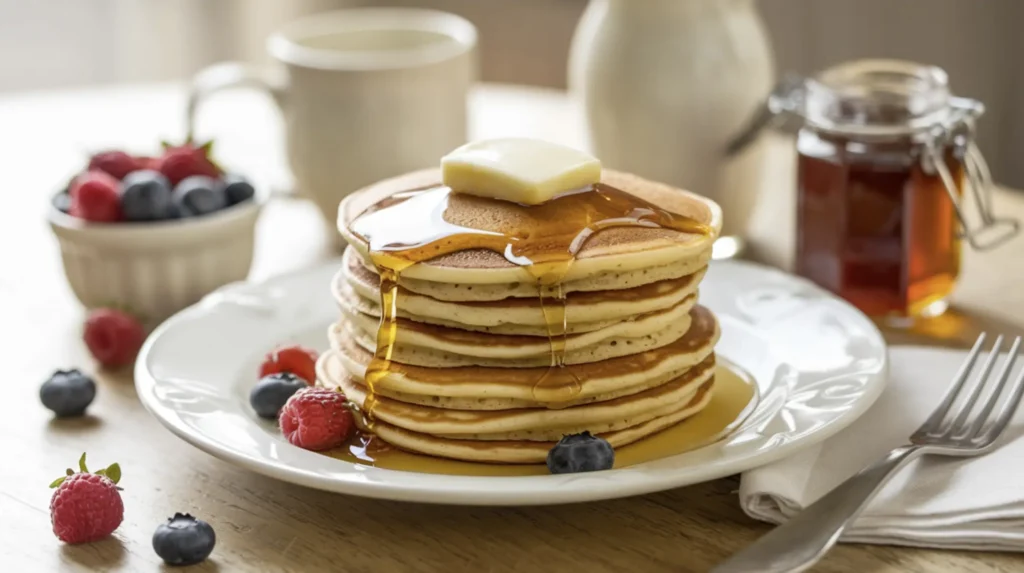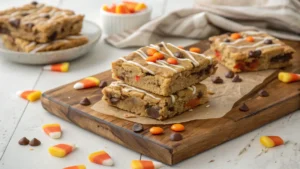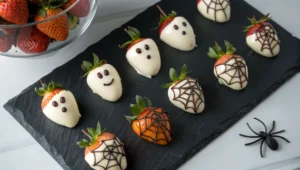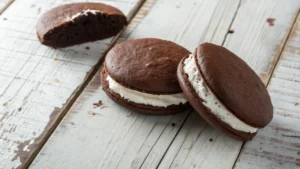What Are Pancakes Recipe Made Of? Many households worldwide enjoy pancakes for their light and fluffy texture. Their simplicity and versatility, paired with great flavor, make them a favorite dish. Whether you prepare them for a quick breakfast or experiment with creative variations, pancakes always deliver. To better understand this delicious dish, you need to explore what constitutes a pancake recipe.
At their core, pancakes combine a harmonious blend of simple yet essential ingredients. Each one plays a key role in creating the light, fluffy, and deliciously palatable pancakes we enjoy. For example, flour provides the structural backbone, while baking powder makes the batter rise, resulting in a soft and airy texture. Sugar enhances the flavor with a touch of sweetness, and milk binds the ingredients together for a smooth, pourable batter. Eggs contribute richness and structure, butter or oil ensures moistness and prevents sticking, and a pinch of salt enhances the overall flavors, achieving the perfect pancake taste.
In short, these simple yet effective ingredients form the perfect base for countless variations, from sweet to savory. For an extra-fluffy option, check out this Fluffy American Pancake Recipe to elevate your pancake game. By understanding what are pancakes recipe made of, you’ll unlock endless possibilities to customize and enjoy this breakfast staple.
What Are Pancakes Recipe Made Of?
At their heart, pancakes combine a few fundamental ingredients that create a delicious breakfast treat. Each simple component plays a crucial role in achieving the perfect pancake. When you understand what are pancakes recipe made of, you can fully appreciate the science behind this beloved dish.
- Flour: The cornerstone of pancake batter, flour provides the structure that holds everything together. All-purpose flour is the most common choice due to its balanced protein content, but alternatives like whole wheat or oat flour can be used for added nutrition and a slightly nutty flavor.
- Baking Powder: Acting as a leavening agent, baking powder is responsible for the pancakes’ signature fluffiness. It reacts during mixing and cooking to create air bubbles that give pancakes their soft, airy texture.
- Sugar: A small amount of sugar enhances the natural flavor of the pancakes without making them overly sweet, leaving room for your choice of toppings to shine.
- Milk: Milk binds the dry ingredients together, creating a smooth and cohesive batter. It also adds moisture and ensures the pancakes cook evenly.
- Eggs: Eggs contribute richness, provide structure, and help create a velvety texture that makes pancakes irresistible.
- Butter or Oil: These fats not only prevent sticking during cooking but also add moisture and a subtle flavor to the pancakes.
- Salt: While used sparingly, salt enhances the overall flavor and balances the sweetness.
In short, these ingredients create the ideal foundation for endless pancake variations. Whether one prefers classic buttermilk pancakes or some other unusual recipes, knowing what the pancake recipe is made of is the key to success. For an extra-fluffy option, check out this Fluffy American Pancake Recipe for inspiration.
Step-by-Step Guide to Making Pancakes

Creating pancakes from scratch is simple and rewarding. By following these steps, you’ll understand not only the process but also what are pancakes recipe made of and how to use each ingredient effectively to achieve the best results.
1. Gather Your Ingredients
Before starting, ensure all your ingredients are pre-measured and ready. This preparation minimizes stress and keeps the process smooth. For a standard pancake recipe, you’ll need:
- 1 cup all-purpose flour – the base of the batter.
- 1 tablespoon sugar – adds a hint of sweetness.
- 2 teaspoons baking powder – for light and fluffy pancakes.
- 1/4 teaspoon salt – balances the flavors.
- 3/4 cup milk – provides moisture and binds the dry ingredients.
- 1 large egg – for richness and structure.
- 2 tablespoons melted butter – adds flavor and prevents sticking.
In addition to these ingredients, gather tools like a mixing bowl, whisk, ladle, and a skillet or griddle. Being organized ensures a seamless cooking experience.
2. Mix the Dry Ingredients
In a large bowl, combine flour, sugar, baking powder, and salt. Use a whisk to evenly distribute the ingredients, ensuring there are no clumps. This step is vital for even cooking and consistent texture.
3. Combine the Wet Ingredients
In another bowl, whisk together milk, egg, and melted butter. Make sure the butter has cooled slightly to avoid curdling the egg. Properly mixed wet ingredients ensure a smoother batter and better pancakes.
4. Create the Batter
Pour the wet mixture into the bowl of dry ingredients. Gently fold them together until just combined. The batter should remain slightly lumpy; overmixing can lead to dense pancakes by activating the gluten in the flour.
5. Preheat Your Cooking Surface
Heat a non-stick skillet or griddle over medium heat. Lightly grease it with butter or oil to prevent sticking. A hot, properly greased surface ensures that the pancakes cook evenly and achieve that perfect golden-brown color.
6. Cook the Pancakes
Using a ladle or measuring cup, pour 1/4 cup of batter onto the skillet for each pancake. Let them cook until bubbles appear on the surface and the edges look set. Flip carefully and cook for another 1-2 minutes until golden. Repeat with the remaining batter.
7. Serve and Enjoy
Stack the cooked pancakes and add your favorite toppings. Fresh fruit, syrup, whipped cream, or even a dusting of powdered sugar are popular choices. This final step is where creativity shines, turning a simple recipe into a personalized masterpiece.
By following this step-by-step guide, you will master the process and deepen your understanding of what are pancakes recipe made of. With practice, you can whip up perfect pancakes every time!
Tips for Perfect Pancakes: What Are Pancakes Recipe Made Of?
Creating the perfect pancakes takes more than just a good recipe. It requires attention to detail, the right techniques, and an understanding of what are pancakes recipe made of. With these tips, you’ll ensure consistently delicious results every time.
Use Fresh Ingredients
Using fresh ingredients is crucial to achieving light and fluffy pancakes. For instance, fresh baking powder ensures your pancakes rise properly, while expired baking powder can lead to flat, dense results. Always check the expiration dates on key ingredients like baking powder, flour, and milk before starting. In addition, fresh eggs and butter add a noticeable richness and enhance the overall flavor.
Don’t Overmix the Batter
In fact, less mixing is often better when making pancakes. Overmixing the batter can develop gluten, which makes pancakes tough and chewy. Instead, gently stir the wet and dry ingredients just until combined, even if the batter is slightly lumpy. This preserves the batter’s airiness, resulting in softer, fluffier pancakes.
Rest the Batter
Allowing the batter to rest for 5–10 minutes can make a world of difference. During this time, the baking powder activates, creating air bubbles that lighten the batter. Not only does this improve the texture, but it also makes the pancakes easier to cook evenly.
Maintain the Right Temperature
The cooking temperature plays a significant role in the outcome. Cooking pancakes over medium heat is ideal. Too high, and they’ll burn on the outside while remaining raw inside. Too low, and they’ll turn out pale and dry. Use medium heat for perfectly golden pancakes with a tender interior.
Common Pancake Mistakes and How to Avoid Them: What Are Pancakes Recipe Made Of?
Even with the best recipe, certain mistakes can ruin your pancakes. Recognizing these pitfalls and knowing how to avoid them will elevate your cooking.
Using Expired Baking Powder
Expired baking powder is a common culprit for flat pancakes. Always check the expiration date and use fresh baking powder to ensure proper rise. Fresh ingredients are a key part of understanding what are pancakes recipe made of and how to make them fluffy.
Overmixing the Batter
Overmixing develops gluten, which leads to dense and chewy pancakes. Instead, stir just until the wet and dry ingredients are combined. A few lumps in the batter are fine; they’ll disappear during cooking.
Incorrect Pan Temperature
Cooking pancakes at the wrong temperature can ruin their texture. If the pan is too hot, the outsides will burn while the inside remains undercooked. On the other hand, if the pan is too cool, the pancakes will cook unevenly and lack the golden-brown color we all love. Use medium heat and test the pan with a small drop of batter before starting.
Skipping the Resting Period
Skipping the resting period for the batter is a mistake many make. Allowing the batter to sit for 5–10 minutes activates the baking powder, creating air pockets that result in fluffy pancakes.
Creative Variations for Pancake Recipes
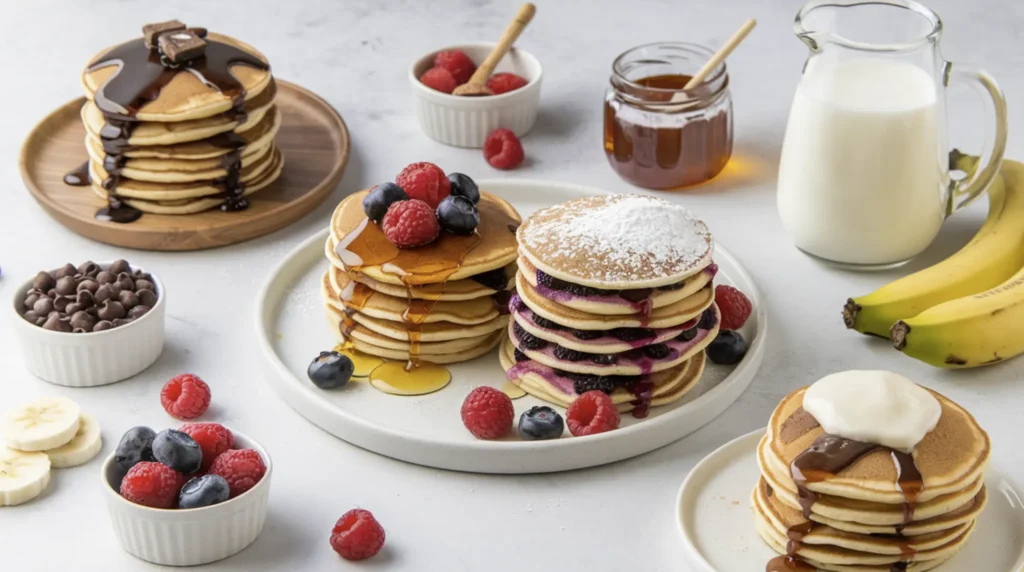
Pancakes are incredibly versatile, and understanding what are pancakes recipe made of opens the door to endless possibilities. From flavorful add-ins to healthier ingredients and unique toppings, here are some creative variations to try.
Flavored Add-ins
Add-ins can transform a simple pancake recipe into something extraordinary. For example:
- Chocolate Chips: Fold them into the batter for a decadent, dessert-like treat.
- Fresh Berries: Blueberries, raspberries, or strawberries provide bursts of natural sweetness and add a pop of color.
- Banana Slices: Mashed bananas not only sweeten the pancakes but also make them moist and tender.
Healthier Alternatives
On the other hand, you can make pancakes more nutritious with a few ingredient swaps:
- Whole Grain Flour: Replace all-purpose flour with whole wheat or oat flour for added fiber and a nutty flavor.
- Natural Sweeteners: Use honey, maple syrup, or mashed fruit instead of refined sugar to reduce added sugars.
- Non-Dairy Milk: Substitute dairy milk with almond, soy, or oat milk for a plant-based option.
Creative Toppings
Toppings are where you can truly personalize your pancakes:
- Yogurt and Granola: For a fresh breakfast twist, add Greek yogurt and a sprinkle of granola.
- Nut Butters: Peanut butter, almond butter, or sunflower seed butter not only taste great but also add protein.
- Savory Options: In contrast to sweet options, try cream cheese, sautéed vegetables, or a fried egg for a hearty, savory twist.
Regional Variations of Pancakes Around the World
Pancakes delight people worldwide, but their form, texture, and ingredients vary greatly by region. These variations show how each culture adapts the concept of pancakes to suit local tastes and traditions. Exploring these differences deepens your appreciation of what are pancakes recipe made of.
- American Pancakes: These are known for their thick and fluffy texture. People often serve them with classic toppings like maple syrup and butter. Baking powder plays a significant role in giving them their rise, making them a staple of hearty breakfasts.
- French Crêpes: In France, pancakes take the form of delicate, paper-thin crêpes. Without a leavening agent, they maintain a flat texture and are typically filled with sweet options like Nutella or savory fillings such as ham and cheese.
- Indian Dosa: A completely different take on pancakes, dosa is a savory and thin creation made from fermented rice and lentils. It’s often accompanied by chutneys and spicy sambars, offering a tangy and flavorful twist.
- Ethiopian Injera: A spongy flatbread made from teff flour, injera serves as both a pancake and a utensil. Its unique tangy flavor comes from the fermentation process and pairs well with rich stews.
The Role of Each Ingredient in Pancakes: What Are Pancakes Recipe Made Of?
Understanding the role of each ingredient in pancakes not only improves your cooking skills but also deepens your grasp of what are pancakes recipe made of. Each component works together to create the perfect pancake, and small adjustments can result in big differences.
- Flour: Acting as the backbone of the batter, flour provides structure. All-purpose flour is the standard choice, but alternatives like whole wheat or almond flour can add nutritional value or unique flavors.
- Baking Powder: This leavening agent is key to achieving the soft, airy texture of pancakes. A small amount is enough to cause the batter to rise during cooking.
- Eggs: Eggs serve as a binder, giving pancakes their stability. They also contribute richness, enhancing both flavor and texture.
- Milk: Milk is essential for creating a cohesive batter. It adds moisture and dissolves the dry ingredients, resulting in a smooth consistency.
- Butter or Oil: These fats ensure that the pancakes are tender and prevent them from sticking to the cooking surface. Butter also adds a subtle, rich flavor.
- Salt and Sugar: Sugar brings a hint of sweetness that complements toppings, while salt balances the flavors and enhances overall taste.
What Makes Pancakes Soft and Fluffy?
Achieving soft and fluffy pancakes requires attention to detail at every step. Whether you’re a novice or an expert, understanding the factors that contribute to fluffiness helps you master the art of making pancakes. Above all, this knowledge connects directly to what are pancakes recipe made of.
Use Fresh Leavening Agents: Baking powder plays a critical role in giving pancakes their height. Expired baking powder cannot create the necessary rise, leading to flat and dense pancakes. Always check your leavening agents to ensure they are fresh and deliver the best results.
Avoid Overmixing: Overmixing the batter activates gluten, which makes pancakes tough and chewy. Instead, stop mixing as soon as the ingredients combine. A few lumps in the batter are fine and will smooth out during cooking.
Rest the Batter: Resting the batter for 5–10 minutes before cooking allows the baking powder to activate, forming air bubbles. These bubbles expand during cooking and create a lighter, fluffier texture.
By following these steps, you ensure your pancakes turn out soft, airy, and delicious every time.
Are Pancakes Healthy?
Pancakes can fit into a healthy lifestyle with a few mindful adjustments. Traditional pancakes often contain high levels of refined carbohydrates and sugars, but you can modify them to include more nutritious ingredients. These changes improve their health benefits and allow you to enjoy them guilt-free. Understanding what are pancakes recipe made of helps you make smarter substitutions.
For instance, replacing white flour with whole-grain or gluten-free options like oat or almond flour adds fiber and nutrients. Using less sugar—or swapping it for natural sweeteners like honey, maple syrup, or mashed bananas—can significantly reduce the calorie content. Additionally, incorporating nutrient-dense toppings such as fresh fruits, nuts, seeds, or yogurt can enhance the overall nutritional profile.
On the other hand, remember that even with healthier ingredients, you must control portions. Eat pancakes in moderation, especially when pairing them with rich toppings like syrups or whipped cream. By following these tips, you will enjoy a delicious breakfast while staying aligned with your health goals.
How to Store and Reheat Pancakes

Storing Pancakes: Let the pancakes cool completely before stacking them with parchment paper in between to prevent sticking. Place the stack in an airtight container and store it in the refrigerator for up to 3 days. For longer storage, freeze them for up to 2 months.
Reheating Pancakes: When it’s time to reheat, use a microwave for speed, heating pancakes in 15-20 second intervals. Alternatively, reheat them in a toaster or skillet for a crispier texture. For larger batches, an oven set at low heat works well.
Avoiding Dryness: To prevent pancakes from drying out in the microwave, cover them with a damp paper towel during reheating. This simple step helps maintain their moisture and softness.
In conclusion, proper storage and reheating keep your leftover pancakes just as delightful as when you first make them.
FAQs
What Do You Need To Make Pancakes?
To make pancakes, you need basic kitchen staples: flour, sugar, baking powder, milk, eggs, and butter. These ingredients form the foundation of any pancake recipe. Additionally, optional ingredients like vanilla extract can enhance the batter’s flavor, adding warmth and aroma. For toppings, popular choices include fresh fruits, whipped cream, or maple syrup to complement the pancakes.
It’s worth noting that ingredient quality plays a vital role. For instance, using fresh baking powder ensures the pancakes rise properly, while high-quality butter adds a rich, velvety texture. With these essentials, you’ll have everything you need to create a delightful pancake recipe that’s both simple and versatile.
What Makes Pancake Recipe Soft And Fluffy?
Soft and fluffy pancakes are the result of several factors working together. First, the leavening agent—usually baking powder—creates bubbles in the batter, making the pancakes rise as they cook. In addition, minimal mixing helps prevent over-developing gluten, which can make pancakes dense and tough.
Another crucial step is allowing the batter to rest for 5–10 minutes before cooking. During this time, the gluten relaxes, and the baking powder activates, resulting in an airy, tender texture. Above all, using room-temperature ingredients ensures that the batter mixes evenly and cooks consistently, further enhancing the fluffiness of your pancake recipe.
Are Pancakes Recipe Healthy?
Pancakes can be part of a balanced diet, especially when made with wholesome ingredients. For example, substituting whole-grain flour for all-purpose flour increases the fiber content, making the pancakes more filling and nutritious. Adding fruits like bananas or berries not only boosts the flavor but also adds vitamins and antioxidants.
Moreover, using natural sweeteners such as honey or maple syrup instead of refined sugar can make your pancake recipe a healthier option. By incorporating nutrient-dense toppings like nuts or seeds, you can further enhance the nutritional profile of your pancakes while still enjoying a delicious breakfast.
What Makes Pancakes Recipe Not Fluffy?
Pancakes may turn out dense or flat if certain steps are missed during preparation. Overmixing the batter is a common culprit, as it activates too much gluten, resulting in chewy pancakes. Similarly, expired or insufficient baking powder can hinder the rise, leaving your pancakes flat.
Using cold ingredients can also affect the batter’s consistency, leading to uneven cooking. To achieve the best results, always use room-temperature ingredients, fresh leavening agents, and allow the batter to rest before cooking. By following these practices, you’ll ensure that your pancake recipe consistently produces fluffy and tender pancakes.
Make Your Own Perfect Pancakes!
Ready to create the ultimate breakfast treat? Dive into our step-by-step guide to making the fluffiest, softest, and most delicious pancakes that will delight everyone at the table.
From ingredient tips to expert techniques, we’ve got everything you need to whip up a stack of pancakes that are golden, airy, and full of flavor. Whether it’s for a cozy weekend breakfast or a special brunch, this recipe will never disappoint.
Start flipping your way to pancake perfection today!
